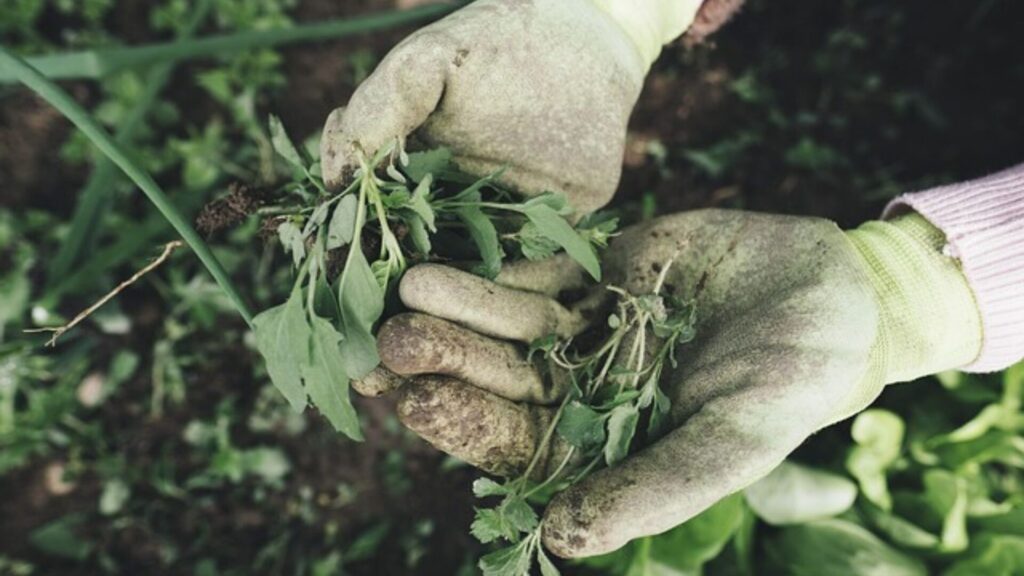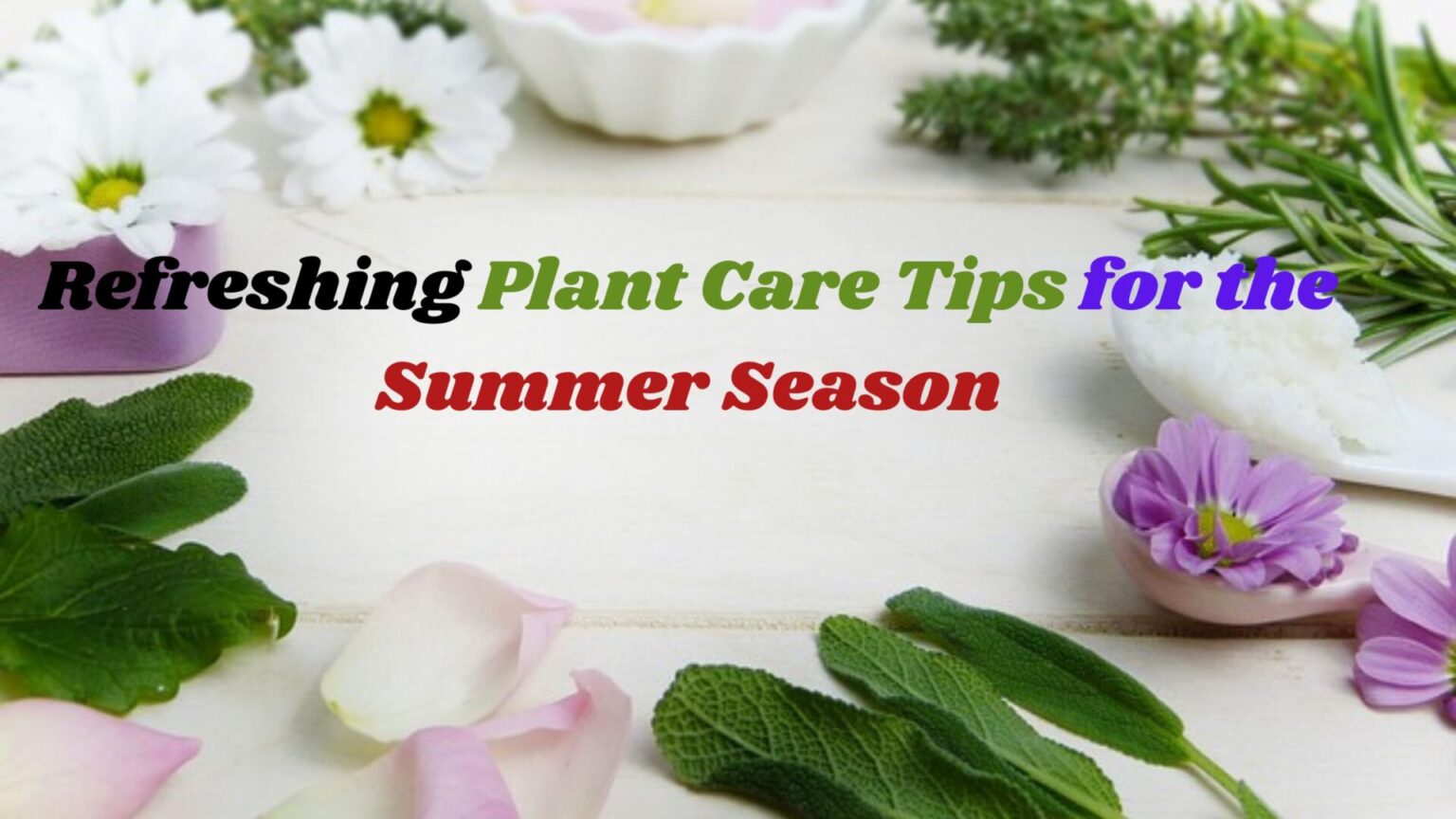Introduction:
“Bloom Brighter: Refreshing Plant Care Tips for the Summer Season”

As the summer sun graces our homes with its warm embrace, it’s essential to adjust our plant care routines to ensure our leafy companions thrive in the changing conditions. With the right tips and tricks, you can transform your indoor oasis into a vibrant haven of greenery. In this guide, we’ll explore refreshing plant care tips tailored specifically for the summer season, helping your plants bloom brighter than ever before.
What are the latest trends in refreshing plant care tips for summer?
Refreshing plant care for summer often revolves around keeping plants healthy and thriving despite the heat. Here are some trends and tips for summer plant care:
- Watering Techniques: Efficient watering is crucial during summer. Trending techniques include bottom watering, where plants absorb water from below, reducing the risk of evaporation. Drip irrigation systems are also popular for their water-saving benefits.
- Mulching: Mulching helps retain moisture in the soil and regulates soil temperature. Organic mulches like straw, wood chips, or compost are commonly used to keep the soil cool and moist.
- Smart Irrigation Systems: With the rise of smart technology, automated irrigation systems controlled by smartphones or programmed timers are becoming popular. These systems can adjust watering schedules based on weather forecasts and soil moisture levels.
- Shade Cloth and Sun Protection: Providing shade for plants during peak sunlight hours can prevent sunburn and heat stress. Shade cloths, umbrellas, or strategically placed structures offer relief from intense sunlight without depriving plants of necessary light.
- Hydroponics and Aeroponics: Indoor gardening methods like hydroponics and aeroponics are gaining traction. These systems allow plants to grow without soil, reducing the risk of soil-borne diseases and offering precise control over nutrient delivery and hydration.
- Natural Pest Control: Integrated pest management (IPM) techniques, which prioritize natural and organic pest control methods over chemical pesticides, are increasingly popular. This approach involves using beneficial insects, such as ladybugs and praying mantises, or plant-based repellents to manage pests effectively.
- Companion Planting: Planting complementary species together can help repel pests, attract beneficial insects, and improve soil health. Popular companion planting combinations include marigolds with tomatoes to deter nematodes and basil with peppers to enhance flavor and repel insects.
- Air Purifying Plants: With growing concerns about indoor air quality, there’s a trend toward incorporating air-purifying plants into interior spaces. Plants like snake plants, peace lilies, and spider plants are prized for their ability to filter toxins and improve indoor air quality.
- Sustainable Practices: Eco-friendly gardening practices, such as composting, rainwater harvesting, and using organic fertilizers, are gaining momentum. These practices reduce environmental impact and promote long-term soil health.
- Community Gardening: Community gardens foster a sense of community and provide access to fresh produce. Shared gardening spaces allow individuals to learn from each other, share resources, and contribute to local food security initiatives.
By incorporating these trends into your summer plant care routine, you can ensure that your plants thrive while minimizing environmental impact and promoting sustainable practices.
Are there any DIY summer plant care projects trending right now?
DIY summer plant care projects are always popular, offering both practical solutions and creative outlets for gardening enthusiasts. Here are some trending DIY projects for summer plant care:

- DIY Self-Watering Containers: Create self-watering containers using recycled materials like plastic bottles or containers. These containers have a reservoir at the bottom that provides a constant supply of water to the plant’s roots, reducing the frequency of watering and ensuring consistent moisture levels, especially during hot weather.
- Vertical Gardens: Vertical gardens are gaining popularity as space-saving solutions for urban dwellers. Build your own vertical garden using pallets, PVC pipes, or hanging planters. Vertical gardens not only maximize growing space but also add visual interest to indoor or outdoor spaces.
- Herb Spiral: Construct a herb spiral, a vertical garden design that allows you to grow a variety of herbs in a small footprint. Herb spirals are typically built using rocks or bricks arranged in a spiral pattern, with each section of the spiral representing a different microclimate suited to specific herbs’ growing requirements.
- Terrariums: Create your own terrariums using glass containers, succulents, air plants, and decorative elements like rocks, sand, or miniature figurines. Terrariums are low-maintenance and can thrive in indoor environments, making them ideal for summer plant care projects.
- Macramé Plant Hangers: Learn the art of macramé and create your own plant hangers to display your favorite trailing plants. Macramé plant hangers add a bohemian touch to indoor and outdoor spaces and allow you to elevate your plant collection while saving valuable surface space.
- DIY Plant Propagation: Experiment with plant propagation techniques such as stem cuttings, leaf cuttings, or division to expand your plant collection without spending a lot of money. Propagating plants is a rewarding and educational activity that can be done indoors or outdoors during the summer months.
- Rainwater Harvesting Systems: Build a rainwater harvesting system to collect and store rainwater for watering your plants. Use barrels or tanks equipped with gutter systems to capture rainwater from your roof, reducing water consumption and utility costs while providing your plants with chemical-free hydration.
- Natural Pest Repellents: Create DIY pest repellents using ingredients like garlic, chili peppers, or neem oil to deter common garden pests. These natural repellents are safe for plants and the environment and can help protect your garden from damage during the summer months.
- Composting: Start a composting system to recycle kitchen scraps and garden waste into nutrient-rich compost for your plants. Composting is a sustainable practice that improves soil fertility, retains moisture, and reduces the need for chemical fertilizers, making it an ideal summer plant care project.
- Solar-Powered Garden Lights: Install solar-powered garden lights to illuminate your outdoor space while reducing energy consumption. Solar lights come in various designs and styles, including stake lights, string lights, and pathway lights, and can enhance the ambiance of your garden during warm summer evenings.
These DIY projects offer fun and practical ways to care for your plants during the summer months while unleashing your creativity and enhancing your gardening skills.
How can I protect my plants from overheating in direct sunlight?

To shield your plants from intense sunlight, consider moving them to areas with partial shade or using sheer curtains to diffuse the light. Additionally, incorporating reflective mulch around the base of outdoor plants can help reduce soil temperature and minimize heat stress.
Conclusion:
With these refreshing plant care tips tailored for the summer season, you can ensure your indoor garden remains lush, vibrant, and resilient. By striking the right balance of light, hydration, airflow, and maintenance, your plants will bloom brighter than ever, bringing joy and tranquility to your home throughout the summer months. Embrace the beauty of nature and watch your green companions thrive under your nurturing care. Happy gardening!
FAQs:
Q1: How often should I water my plants during the summer?
A1: The frequency of watering depends on factors like plant type, pot size, and environmental conditions. Generally, aim to water your plants when the top inch of soil feels dry to the touch. Adjust your watering schedule based on individual plant needs and observe how they respond to ensure optimal hydration.
Q2: What are some signs that my plants are experiencing heat stress?
A3: Symptoms of heat stress include wilting, yellowing or browning leaves, drooping foliage, and stunted growth. If you notice these signs, promptly move your plants to a cooler location, increase hydration, and provide adequate airflow to alleviate stress.
References:
- Bonza, Baillie. “How Often Should You Water Your Plants in Summer?” The Spruce, www.thespruce.com/watering-plants-in-summer-848228.
- McVicar, Jekka. “Heat Stress in Plants: How to Protect Your Garden from Heat.” RHS Gardening, www.rhs.org.uk/advice/profile?pid=430.
- Khan, Amjad. “How to Protect Your Plants from Overheating.” Gardening Know How, www.gardeningknowhow.com/plant-problems/environmental/protecting-plants-from-heat.htm.
- “Common Plant Problems: Symptoms and Solutions.” University of California Agriculture and Natural Resources, www.ucanr.edu/sites/gardenweb/files/29059.pdf.
- “Summer Plant Care Tips.” Better Homes & Gardens, www.bhg.com/gardening/houseplants/care/summer-plant-care-tips.
- “How to Prune Houseplants: Basic Tips for Beginners.” Houseplant Resource Center, www.houseplantresourcecenter.com/how-to-prune-houseplants.






